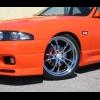The Three Litre Thread
Announcements
-
Similar Content
-
Latest Posts
-
I just realised on coolant flush tutorials they don't mention anything about after putting on sealant how long to wait for it to cure. Say for example you are doing multiple flushes to clear out the system, so you need to keep removing the bolt and putting it back in but surely you aren't waiting 24 hours for it to cure other wise the job could take 7 days if you need 6-7 flushes.
-
Ah my bad, the way you wrote it I thought you meant not to use those products.
-
Um, no. I said not to use thread tape. You should have read the remainder as the instruction as to what you should use. My bad for not being clear enough.
-
Ah right, thanks. I thought because water is thin it might require some kind of sealant. I'll put it in without anything.
-
You have found the problem. The wire from the switch to the HB is shorted to earth. Now you have to physically find it and replace it. It won't be the switch, although following the steps above (and yes, where you ask, that is the light switch on the RHS of the binnacle) will rule it out for sure. Or not, if perhaps the switch has melted. But there's no route to earth inside the switch, so I can't see how it would.
-






Recommended Posts
Create an account or sign in to comment
You need to be a member in order to leave a comment
Create an account
Sign up for a new account in our community. It's easy!
Register a new accountSign in
Already have an account? Sign in here.
Sign In Now